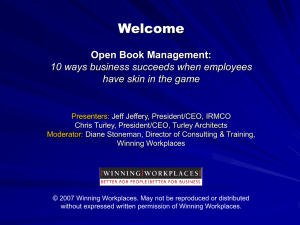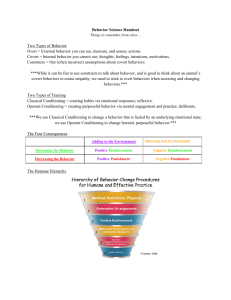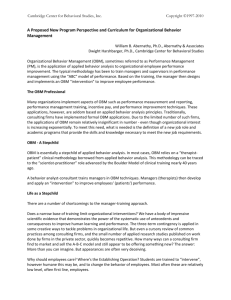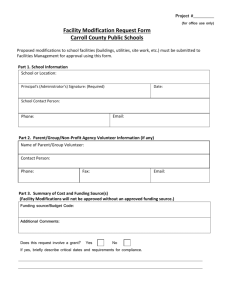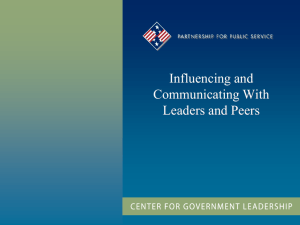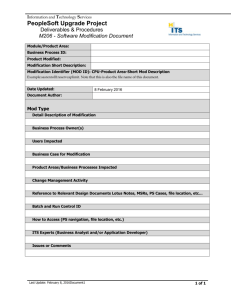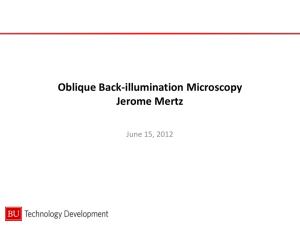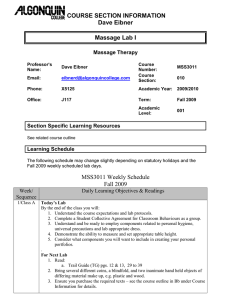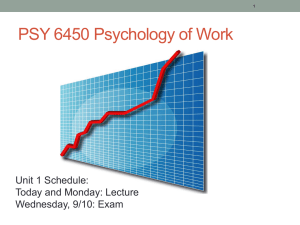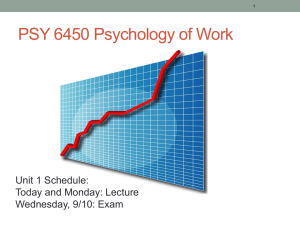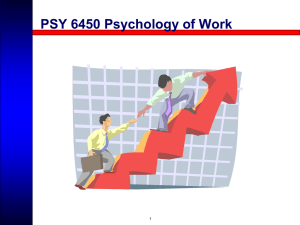lecture 9 - cda college
advertisement
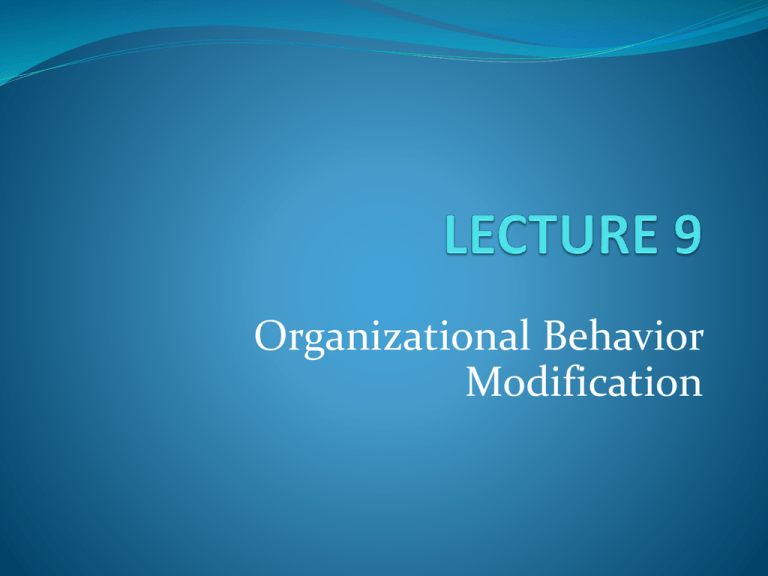
Organizational Behavior Modification OBM Organizational Behavior Modification Theory: A motivational theory suggesting that an individual will behave in a manner that helps him or her avoid potential negative outcomes and achieve agreeable outcomes. Steps of OBM Identify the behavior to be learned (Should be observable, objective, and countable. Identify behaviors that make an impact on employees’ performance) Measure the frequency of the behavior (Provides a baseline of current performance, how many times the behavior occurs) Steps of OBM Perform a functional analysis (Current antecedents to and consequences for behavior) Develop and apply a strategy (Taken directly from operant conditioning principles, strengthen desirable behaviors and weaken undesirable ones) Assesses revised performance (check final result and identify differences occurred.) OBM The principles of behavior modification use the conditioning process to develop new habits and eliminate old ones. Positive and negative reinforcements are the tools used throughout this process. The reinforcements can be rewards such as money, social approval and responsibility. Managers determine organizational goals and the types and timing of reinforcement that can be applied to employees’ behaviors. Behavioral Self Management Self-management is a strategy in which someone keeps track of his/her own behavior, either for the purpose of increasing a positive behavior or skill or for the purpose of decreasing a problem behavior. Self-management is a valuable intervention because it empowers the person to monitor and change his/her own behavior. OBM in Perspective The emphasis in a behavior modification perspective (BMP) of learning is on a set of intervention techniques designed to influence the behavior of individuals. That is, focus is placed on how environmental events (stimuli, reinforcements, and the like) can be modified to bring about changes in the way people act. Techniques Managers have many ways of reinforcing good employee performance through incentive plans, wages, bonuses, disciplinary procedures, and at last resort the threat of termination as behavior change techniques. Feedback is key in changing employee behavior, particularly if it is explicit and non-threatening. However, the consequences of behavior also affect behavior change. Incentive rewards and recognition have been shown to promote positive behavior change, while disciplinary actions and threats of termination tend to cause their own problems. Positive Reinforcement The best way to improve performance is to reward the employee. You must discover how the employee reacts to different types of rewards, for example often, during periods of corporate change, employees feel vulnerable. They worry about losing their jobs as needs in the company shift to different goals. Career counseling and training are helpful in maintaining good morale by showing employees they are valued. Change Behavior Modifying the behavior of the entire organization involves gathering information from the front-line managers and employees. Recognition in the form of promotion, awards and specialized training can keep the front-line people enthusiastic about their key role in helping the company maintain competitive edge.
